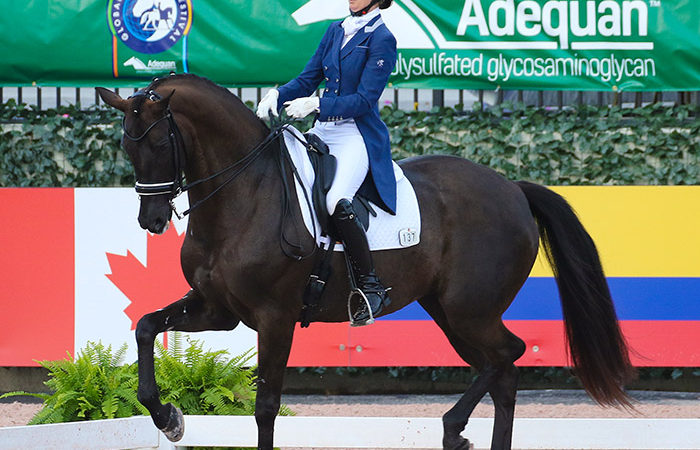Judges, Code of Points as Described by British Olympian Richard Davison of Dressage Judging Working Group
7 years ago StraightArrow Comments Off on Judges, Code of Points as Described by British Olympian Richard Davison of Dressage Judging Working Group

Photo FEI/Anthony Demierrre
LAUSANNE, Switzerland, April 3, 2018–British Olympic rider Richard Davison gave an update at the recent International Equestrian Federation (FEI) Sport Forum of the Dressage Judging Working Group, including a pilot study of a defined code of points.
His presentation was distributed by the FEI Tuesday and is available here.
The group working on the code of points is made up of Stephen Clarke of Great Britain and FEI Judge General, Katrina Wüst of Germany representing officials, Uwe Mechlem of Germany representing the judges supervisory panel, Anky van Grunsven, rider of the Netherlands, Wayne Channon of Great Britain representing dressage riders club and Linda Keenan, an American based in Britain representing the trainers club.
The aims of the code of points, as explained by Richard, are:
–Define a scale starting from 10 for a specified series of movements from the Grand Prix test;
–Identify only measurable observations which are easily visible to each judge, and recommend wording that reflects every day language and refers to specific parts of the horse/rider, and
–Recommend a prioritized scale of deductions which relate to the principle purpose of each movement.
Piaffe was given as an example:
FUNDAMENTAL ELEMENTS: Collection – Height of steps – Regularity
Piaffe | BASE SCORE |
10 | As above showing the prescribed # of steps |
9 | As above but slightly less height/energy |
8 | As above but clearly less height/energy |
7 | As above but front foot only reaching fetlock of supporting leg hind foot reaching just above hoof of supporting leg |
6 | Clear steps but just coming from ground |
5 | Earthbound steps |
4 | Some clearly irregular steps |
3 | Irregular throughout/obvious resistance |
2 | |
1 | Only 1 or 2 steps |
0 | No piaffe steps |
Research on the broader issue of dressage judging, Richard said, concluded that in dressage the goal was to search to improve horse welfare, performance, show organization and promotion, wider media coverage, opportunities for youth but…
–Time to evaluate cognitive demands made upon our judges?
–Compare known factors causing cognitive variability–concentration levels, attention levels, memory recall efficiency, decision-making levels, focus levels, manage bias etc.–against the judging system;
Research for the suggested maximum of 40 horses per day, breaks in judging, the degree of difficulty format for freestyles, advice to judges with the aim of improving judging performance and increasing chances of delivering fairness to athletes.
The research and testing being pursued by the group, he said, are:
–Learn from other sports what is known about optimizing official’s cognitive performance;
–Much research already exists or is on-going;
–Much research is transferable from commercial tasks to sport;
–It is not essential to undertake expensive trials but learn from what is already known and seek expert opinion, and
–Use historical data and the placebo affect.

